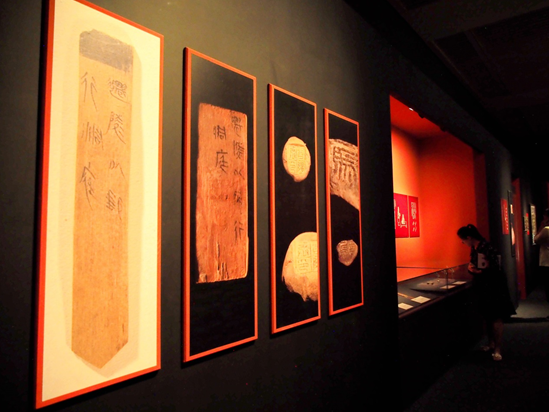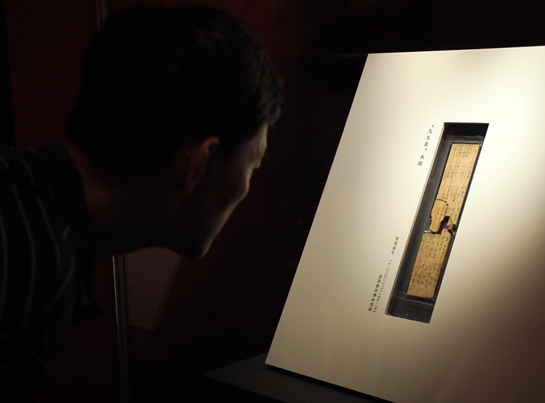
In ancient China, a piece of bamboo or wooden slip can tell the history of a city. In Beijing, the National Museum of China showcases life some 2,200 years ago with an exhibition on ancient bamboo writing slips from the Qin Dynasty.
A total of 175 ancient bamboo slips were unearthed from Liye township in Longshan county in central China's Hunan Province. Carved on them are the state secrets of the Qin Dynasty's first emperor.

Ancient bamboo writing slips from the Qin Dynasty. /VCG Photo
Huang Qian, curator of National Museum of China, said: "And this particular piece has even subverted Chinese scholars' established understanding of the administrative division of the Qin Dynasty. It labels Dongting Prefecture, something even ancient books like Records of the Grand Historian of China, didn't record."
The wooden slips include the earliest envelope in China, showing how strict the attendance assessment used to be for government officials two millennia ago. The slips also include the most complete multiplication table found in China, as well as the earliest in the world.
Liu Weixian, engineer of Curation Department of National Museum of China, said: "In fact, few people knew that the multiplication table was already popular in the Qin Dynasty."

Ancient bamboo writing slips from the Qin Dynasty. /VCG Photo
In 2002, more than 38,000 bamboo writing slips were found in Longshan county. It was considered the most important archeological discovery after the Qin Terracotta Army in 1973 in Xi'an, northwest China's Shaanxi Province. The writing slips predate the invention of paper, giving them great significance in furthering research on the dynasty's politics, economy and culture.
(Cover image via VCG)

Copyright © 2018 CGTN. Beijing ICP prepared NO.16065310-3
Copyright © 2018 CGTN. Beijing ICP prepared NO.16065310-3